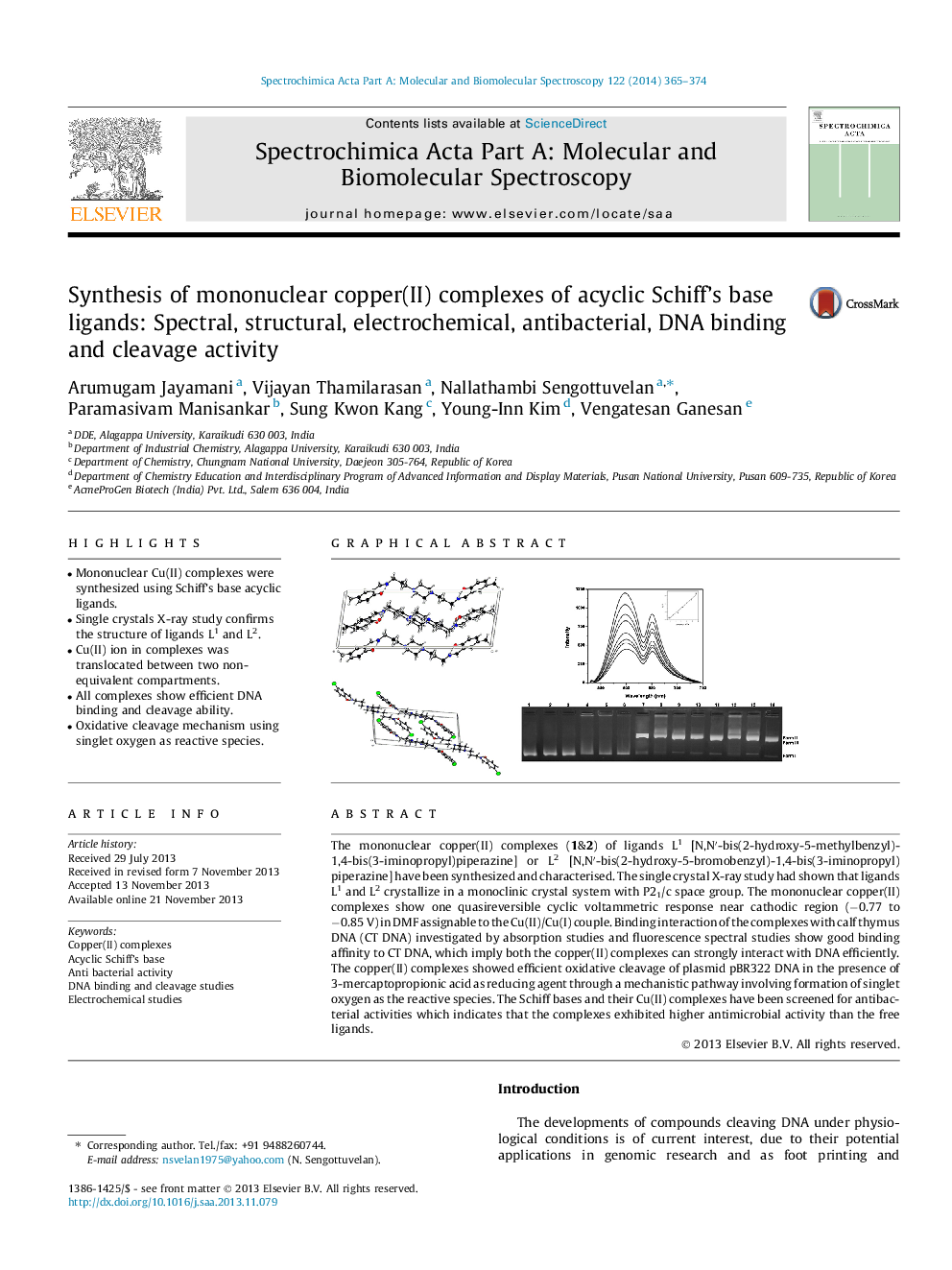| Article ID | Journal | Published Year | Pages | File Type |
|---|---|---|---|---|
| 1230259 | Spectrochimica Acta Part A: Molecular and Biomolecular Spectroscopy | 2014 | 10 Pages |
•Mononuclear Cu(II) complexes were synthesized using Schiff’s base acyclic ligands.•Single crystals X-ray study confirms the structure of ligands L1 and L2.•Cu(II) ion in complexes was translocated between two non-equivalent compartments.•All complexes show efficient DNA binding and cleavage ability.•Oxidative cleavage mechanism using singlet oxygen as reactive species.
The mononuclear copper(II) complexes (1&2) of ligands L1 [N,N′-bis(2-hydroxy-5-methylbenzyl)-1,4-bis(3-iminopropyl)piperazine] or L2 [N,N′-bis(2-hydroxy-5-bromobenzyl)-1,4-bis(3-iminopropyl) piperazine] have been synthesized and characterised. The single crystal X-ray study had shown that ligands L1 and L2 crystallize in a monoclinic crystal system with P21/c space group. The mononuclear copper(II) complexes show one quasireversible cyclic voltammetric response near cathodic region (−0.77 to −0.85 V) in DMF assignable to the Cu(II)/Cu(I) couple. Binding interaction of the complexes with calf thymus DNA (CT DNA) investigated by absorption studies and fluorescence spectral studies show good binding affinity to CT DNA, which imply both the copper(II) complexes can strongly interact with DNA efficiently. The copper(II) complexes showed efficient oxidative cleavage of plasmid pBR322 DNA in the presence of 3-mercaptopropionic acid as reducing agent through a mechanistic pathway involving formation of singlet oxygen as the reactive species. The Schiff bases and their Cu(II) complexes have been screened for antibacterial activities which indicates that the complexes exhibited higher antimicrobial activity than the free ligands.
Graphical abstractFigure optionsDownload full-size imageDownload as PowerPoint slide
